- Announcements
- BBQ and Food
- Cars
- Computing
- Cool Stuff
- Current Events
- Electric Vehicles
- Electronics
- Energy
- Flashahaulism
- Funny
- Government
- Hints and Tips
- History
- HVAC
- Induction heating
- Internet
- Lighting
- Misc
- Neon and other lighting
- Nuclear
- Personal
- Pets
- Philosophy
- Photography
- Power Generation
- Product Reviews
- Projects
- Q and A
- RV/Camping
- Science
- Tellico
Categories
Blogroll
 Print This Post
Print This Post
Using the Induction Heater – Plumbing
PermaLinkEvery plumber and most anyone who has done much handyman work has run into that crufty old galvanized steel pipe that needs to be removed that just won’t come loose. The old pipe dope has set up hard as a rock and rust has made its contribution to the problem.
Traditionally, one would drag out the torch to heat the joint, perhaps starting a fire in the process :-). With induction heat, that isn’t necessary. Clean flameless heat “gits ‘er done” several times faster than a torch.
I asked a good friend of mine Bill Crow to come up with the cruftiest old piece of pipe he could find on his farm for me to do a demo with. Here’s what he found. Some inch and a half galvanized drain fittings.
I decided to remove the side coupling, as it looked to be the toughest. Here’s the work coil set up and ready to heat. It is made from ordinary 4 gauge welding cable.
Notice that the cable isn’t wrapped tightly nor particularly evenly. Neither are necessary. I picked the number of turns based on experience.
An approximately 2.5 minute shot of juice produced the temperature that you see here. At that temperature the coupling has expanded and the pipe dope has become plastic again. Note that in this demo I’m using Roy 1.0. He generates only about half the power of Roy 2.2 and the upcoming 3.0.
Here I’m unscrewing the coupling. Notice that I’m choked up on the pipe wrench handle. Very little force was needed to break loose the fitting and unscrew it.
The finished fitting. Notice how the old pipe dope has smeared. It was soft and plastic at almost 450 degrees! Notice too that there are no stain nor burn marks on the pipe nor the bench seat below the fitting. That could just as well been wood. Completely safe from fire.
An obvious question is, “What if the pipe is full of water?” Well, the same situation exists as with a torch. If the pipe is really full of water, especially under any kind of pressure then the heater isn’t going to do much. It will heat the fitting and the water to the boiling point and that might be enough. If there is just a little water then the heat will boil it away. Just takes a little longer.
Another question that comes up all the time is “Can I do copper?” The answer right now is unfortunately no. Copper is so electrically and thermally conductive that it is very difficult to pump enough power into a copper fitting to reach sweating temperature. We’re working on the problem but it may be that there isn’t enough power available from a 120 volt outlet to do the job, at least not on 1/2″ and above fittings. Stay tuned for future developments.
Posted by neonjohn on October 19th, 2010 under Cool Stuff, Induction heating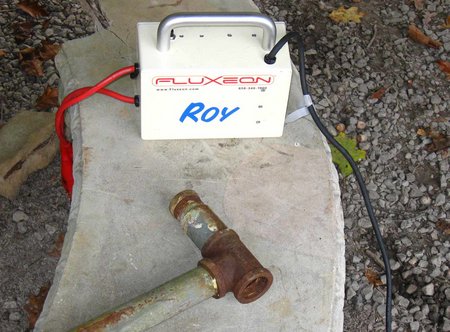
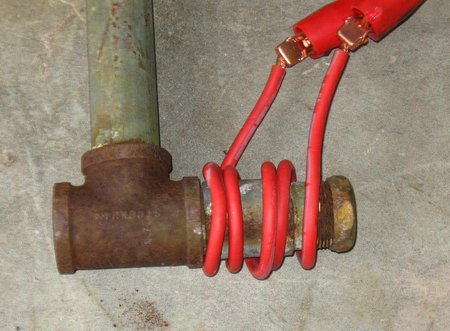
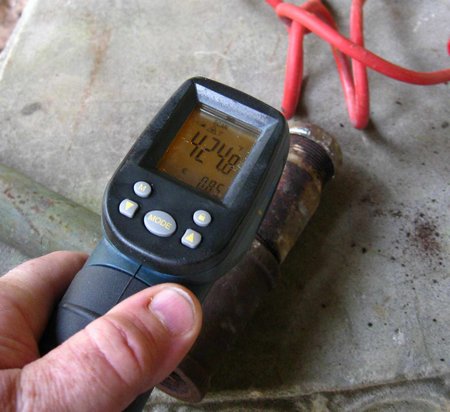
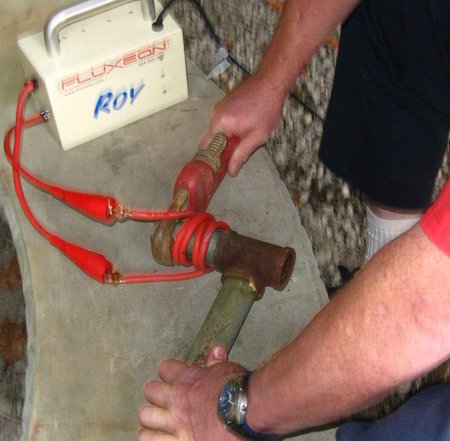
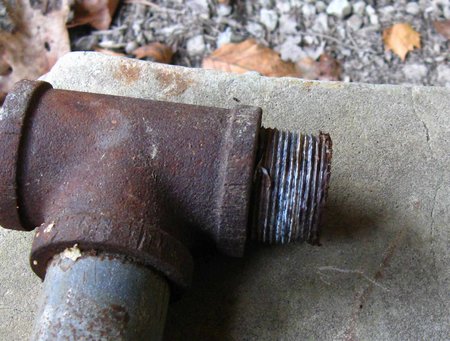
November 27th, 2014 at 2:32 am
i want this for my shop
November 27th, 2014 at 3:09 am
Hey Garry,
Just go to http://www.fluxeon.com and we’ll fix you right up.
That was our very first prototype at only 500 watts. Our 1500 watt 120 volt unit that we call the Roy 1500 runs a bit over 1500 watts with ordinary line voltage. If you want more power, we have a 240 volt unit that runs 2500 watts. And if you’re into melting and casting metals, we have some induction furnaces in the works. Go to the top page of this blog to see the first prototype.
John
December 19th, 2021 at 10:46 am
Hi! Your article “Using the Induction Heater – Plumbing†is very helpful for. After reading your article I got a lot of knowledge from your article. I am also working as a plumber withplumberlasvegass and researching about the pluming information. Thank you for sharing information.